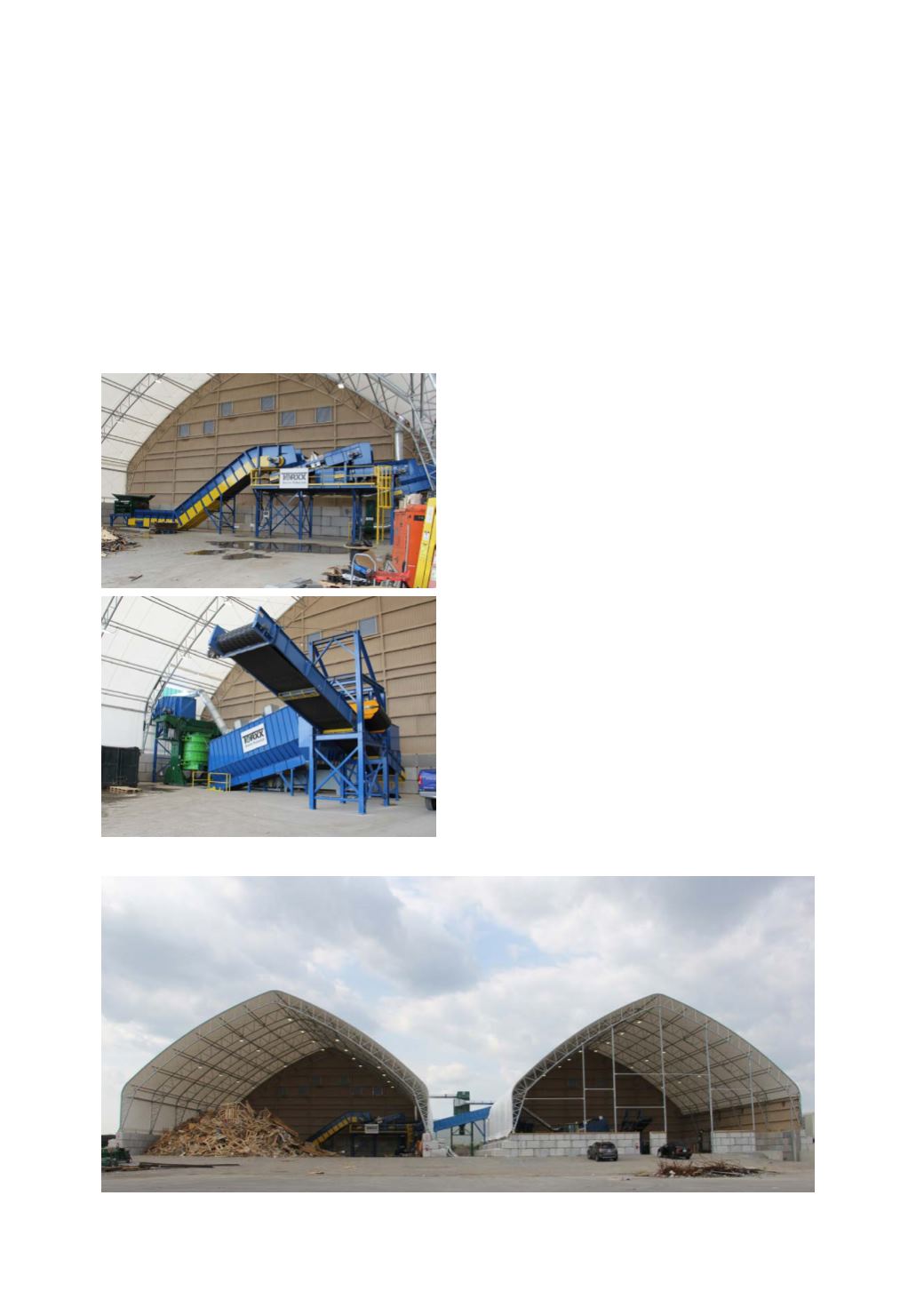
size. That was of interest to St Marys, so that started
discussions after the show.”
St Marys, which operates as part of international
building materials supplier, Votorantim Cimentos, had
been considering a number of different traditional
reduction systems (e.g. shredders), but were “really
interested in what we could do with particle size
shape, which is perfect for their kilns as a low‑carbon
fuel,” continued Bowers. McPherson Transfer,
a local ICI waste transfer station, was already
receiving waste wood but not processing to
reduce sizing; it joined in the project discussions.
McPherson Transfer is located 25 min. drive from the
cement plant.
Installation began in summer of 2018 and – despite
some delays due to high winds at the project site,
which is located close to the shores of Lake Ontario
– was completed and operational by the fall.
Construction included two quonset‑type buildings
to house the installation on available land at the
McPhearson Transfer station.
The installation
The transfer station is fed by truck with ICI waste
from the greater Toronto area. It is the wooden
element of this waste that is processed using the
TORXX Kinetic Pulverizer. Once tipped at the transfer
station, the waste wood is fed into the TORXX
equipment by an excavator via a hopper/auger.
“The purpose of the auger is to feed in material on a
meter-type basis onto an incline conveyor,” explained
Bowers. From the incline conveyor, the material is
transferred to another conveyor with a metal detector.
“The sole purpose of that system is to detect large
pieces of metal that we don’t want to go through the
pulverizer. The pulverizer can handle smaller pieces of
metal – nails, nuts, bolts, small rebar material – but not
large chunks of metal.”
The use of a metal detector is required as some
of the large metal elements are entrained in the
wood and therefore not visible to the human eye. It is
calibrated to allow smaller metal items through but,
should it detect a larger metal item, it signals the next
conveyor. This accepts the metal-containing material,
before reversing and dumping into a bin below.
Once the larger metal items have been removed,
the material is conveyed into a hopper, located
on top of the TORXX Kinetic Pulverizer. From
the hopper, the material is fed into the pulverizer,
where it is reduced to the required size within
a few seconds. The pulverizer itself comprises
a vertical shaft with a series of rotating arms
and pads to process the material quickly and
efficiently. The aerodynamic process smashes
input materials against themselves at high speed,
McPherson Transfer station in Pickering, Ontario, with the TORXX Kinetic Pulverizer.
The TORXX Kinetic Pulverizer.
30
World Cement
North America 2019








